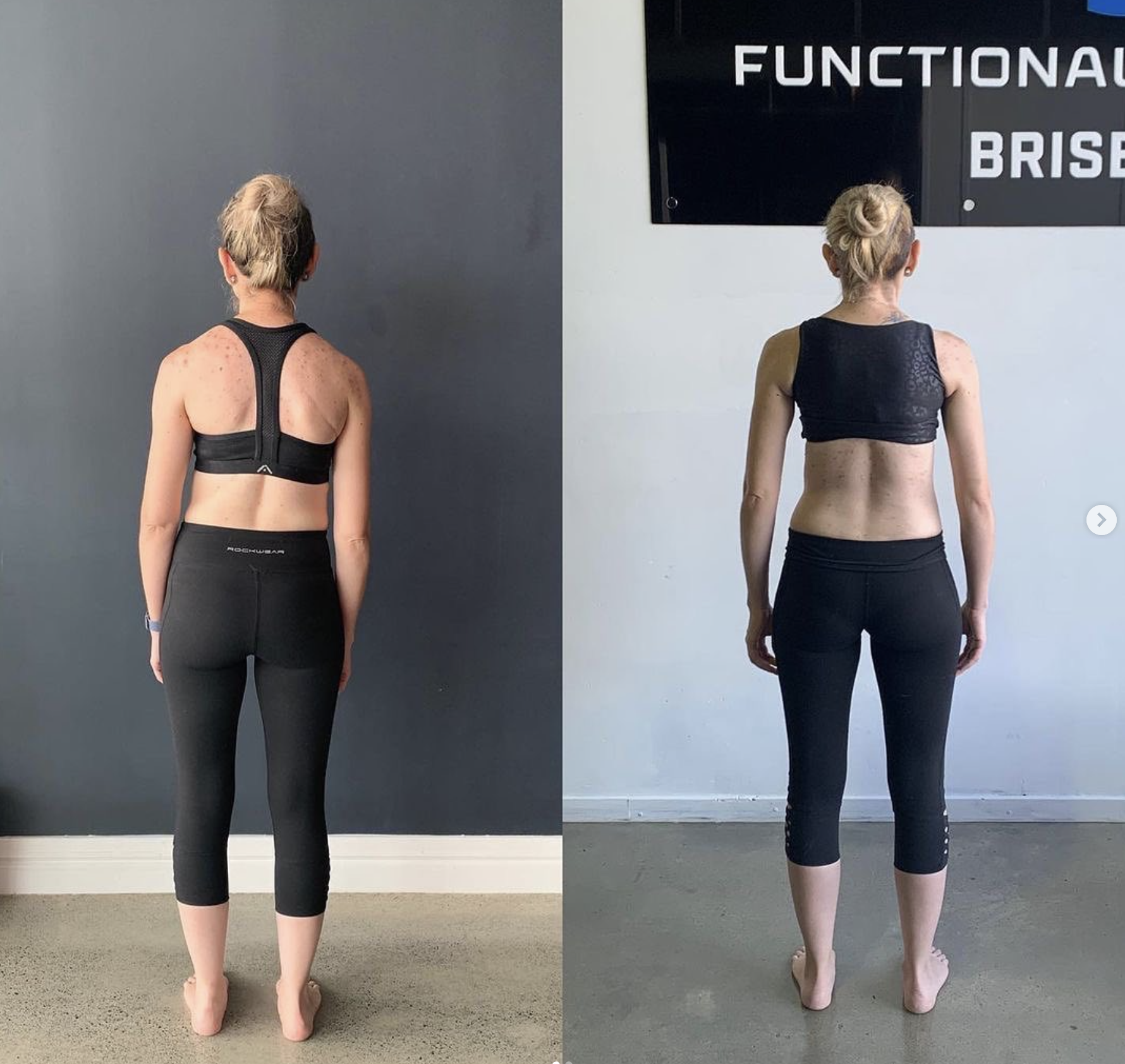Case Studies Of Corrected Scoliosis Using Functional Patterns
What Is Scoliosis?
Scoliosis is a sideways curvature of the spine. Everyone has a degree of scoliosis, but it becomes a concern when the curve becomes severe enough to affect daily life. Ideally, scoliosis should be managed before it progresses.
The traditional options for scoliosis treatment typically include:
Risking further progression of the curvature, or
Undergoing spinal fusion surgery, where the spine is fused to itself or to a rod.
These options can be invasive and do not address the root causes of scoliosis. At Functional Patterns Brisbane, we aim to provide a movement-based and holistic approach to managing scoliosis.
How Do We Naturally Address Scoliosis at Our Brisbane Clinic?
Functional Patterns counteracts the motions that contribute to scoliosis by activating the correct muscles in the right sequence. This movement-based physical therapy method has improved spinal alignment for many clients. If you're searching for a scoliosis specialist in Brisbane, consider our clinic.
Functional Patterns:
Cost-effective compared to surgery
No downtime required
Targets the root cause of scoliosis
Offers numerous additional benefits
Our one-on-one training at Functional Patterns creates real mechanical changes to help straighten scoliosis. We focus on a hierarchy of needs to facilitate lasting improvements, including:
Supporting the fascia and maintaining hydration
Enhancing nervous system function
Optimising movement patterns
Managing healthy inflammation levels
Case Studies: Can You Correct Scoliosis Without Surgery?
Case Study 1
Naturally Straightened Scoliosis Using The Functional Patterns Method
Client: Melissa
Due to severe head trauma, Melissa struggled with dynamic movement, experiencing dizziness and loss of balance. Using Functional Patterns corrective techniques (IMAPS) and myofascial release, we have improved her balance and coordination.
Outcomes:
Improved scoliotic curve
Better joint alignment and scapular positioning
Enhanced cognitive function and proprioception
Protocol:
Gait analysis to identify movement issues driving scoliosis
Myofascial release to rehydrate fascia
Corrective movement training to address gait asymmetries
Diet and lifestyle interventions for inflammation and well-being management
Melissa says: “I have seen significant improvement to my coordination, posture and proprioception through Functional Patterns. These sessions have played a key part in my journey to recover my cognitive and physical functions after my injury. Shane is an effective coach with a keen eye and knowledge for movement patterns. I have really enjoyed training with him..”
Case Study 2
Naturally Straightened Scoliosis Using Functional Patterns
Client: Courtney
Courtney had a 50-degree curve corrected to 7 degrees through surgery in 2002 but developed a second curve of 40 degrees in 2018. Using Functional Patterns, we’ve seen a reduction in her curve and pain, despite the limitations imposed by her steel rod.
Outcomes:
Improved spinal alignment
Reduced lumbar compression
Decreased pain
Protocol:
Gait analysis to assess impacts of surgical history and movement patterns
Myofascial release to improve range of motion
Functional Patterns training to balance asymmetries
Dietary protocol to adjust intra-abdominal pressure and reduce inflammation
Courtney says: “I have been training with… Functional Patterns for 6 months now to help with my scoliosis pain. I’ve had significantly reduced levels of pain and a visibly straighter back. I look forward to making more improvements as we continue. Excellent trainer, I highly recommend Functional Patterns… for anyone wanting to improve their lives.”
Case Study 3
Naturally Straightened Scoliosis Using Functional Patterns
Client: Kynan
After suffering from upper thoracic and scapular pain, Kynan has seen relief through Functional Patterns.
Outcomes:
Improved scoliosis and scapular alignment
Pain-free workdays as a tradie
Enhanced hip extension and posture
Protocol:
Corrective biomechanics through gait analysis
Functional Patterns Chambers for movement improvement
Dynamic exercises for structural adaptation
Kynan says: “In the beginning the pain was unbearable in my upper right thoracic and right scapular which would leave me unmotivated and fatigued 24/7.
Nowadays this region is feeling pain free, occasionally I will experience some discomfort in the area and I will have to release the muscles around this point with a lacrosse ball but then it subsides and is fine. Apart from this slight discomfort, I experience no pain. I’m confident that we will be able to keep addressing my imbalances and work towards feeling better connected and more athletic with my entire structure.
Being pain free has improved my ethic to work and has made me a more productive tradie. As well as allowing me to relax and enjoy a better work life balance.”
Why We Use Gait Analysis for Scoliosis Assessment
Gait analysis offers an in-depth look at how the body moves, allowing us to identify patterns that drive scoliosis. This process evaluates joint movement, muscle activity, and ground reaction forces to understand how these elements contribute to spinal curvature.
By studying how you walk or run, our practitioners can objectively assess factors like joint alignment, asymmetries, and muscle coordination. This comprehensive evaluation helps us design targeted interventions to improve gait, reduce pain, and correct scoliosis naturally.



